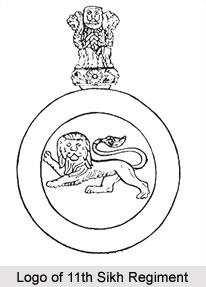 The 11th Sikh Regiment, also known as the Sikh Regiment, was a former infantry regiment that operated under the administrative authority of the British Empire in India. The military battalion was established in the year 1922 when the British Government of India re-grouped and re-numbered all the regiments after the First World War. The single infantry regiments were merged together to raise larger multi battalion infantry units that included 4 to 6 battalions.
The 11th Sikh Regiment, also known as the Sikh Regiment, was a former infantry regiment that operated under the administrative authority of the British Empire in India. The military battalion was established in the year 1922 when the British Government of India re-grouped and re-numbered all the regiments after the First World War. The single infantry regiments were merged together to raise larger multi battalion infantry units that included 4 to 6 battalions.
History of 11th Sikh Regiment
The 11th Sikh Regiment was raised by the amalgamation of 7 former British Indian Army regiments, namely the 35th Sikhs, the 47th Sikhs, the 36th Sikhs, the 45th Rattray`s Sikhs, the 14th King George`s Own Ferozepore Sikhs and the 15th Ludhiana Sikhs. The 14th King George`s Own Ferozepore Sikhs was designated as the 1st Battalion; the 15th Ludhiana Sikhs became the 2nd Battalion; the 45th Rattray`s Sikhs regiment was appointed as the 3rd Battalion; the 36th Sikhs unit was developed as the 4th Battalion; the 47th Sikhs was designated as the 5th Battalion; and the 35th Sikhs unit became the 10th (Training) Battalion, 11th Sikh Regiment
Later during the Second World War, seven more regiments of the unit was formed, which included the 7th Battalion, 8th Battalion, 9th Battalion, 14th Battalion, the 25th Battalion and a Machine Gun Battalion. Eventually the 8th Battalion, 11th Sikh Regiment and the 9th Battalion 11th Sikh Regiment are designated as Light Anti-Aircraft battalions.
Military Operations of 11th Sikh Regiment
The 11th Sikh Regiment provided valuable military services to the British administration during the Second World War. The troops of the regiments participated in a number of battles and conquests conducted by the British during that period.
Development of 11th Sikh Regiment
After the political withdrawal of the British Crown from India and the Partition of India in the year 1947, the army was also divided among the respective armies of India and Pakistan. The 11th Sikh Regiment was included as a part of the modern Indian Army and was renamed as the Sikh Regiment.



















